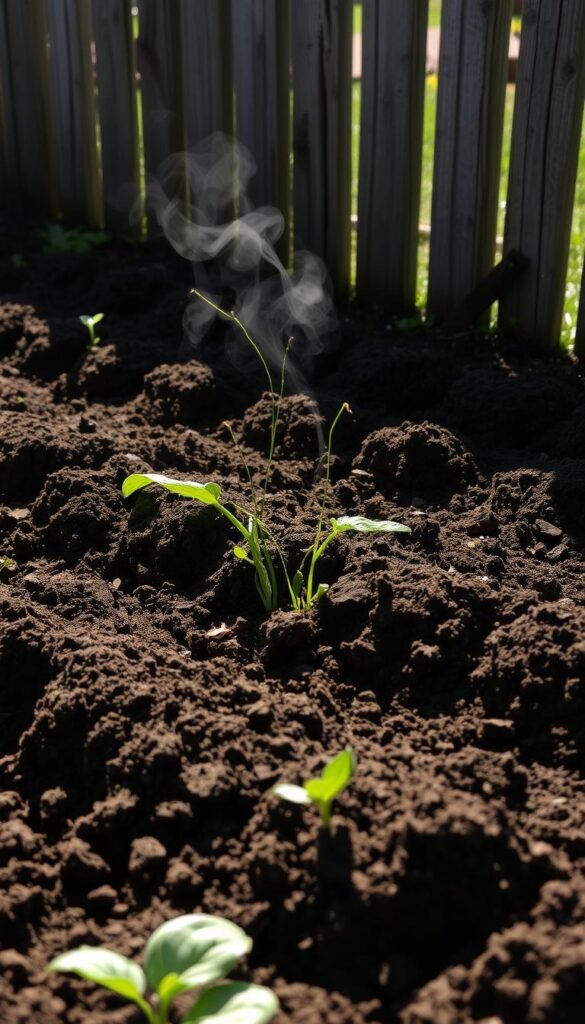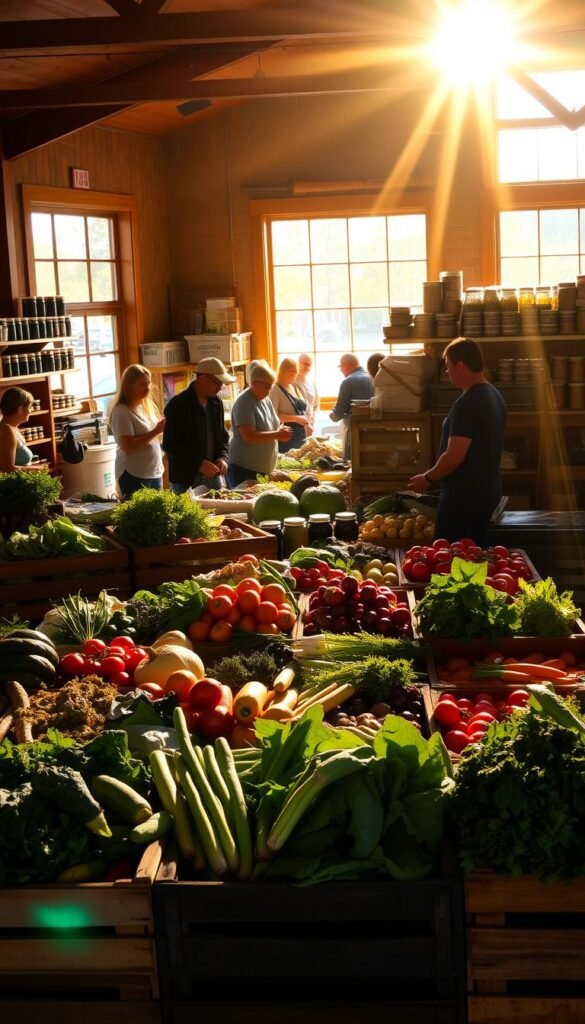Ever wonder how your favorite meals begin? It starts long before ingredients hit your plate. Growing nutrient-rich foods requires careful planning, from choosing the right seeds to nurturing plants at every stage. This journey blends science, patience, and a deep respect for nature.
Quality begins underground. Healthy soil acts like a vitamin boost for crops, helping them resist pests naturally. Many growers now use heirloom varieties – seeds passed down through generations – which often thrive better in local conditions than mass-produced alternatives.
The farm-to-table movement isn’t just a trend. It’s about knowing exactly where your meals originate. When you source ingredients locally, you get fresher flavors while supporting community agriculture. Did you know? Tomatoes picked ripe from the vine contain up to 30% more vitamins than store-bought ones harvested early.
Your efforts in the garden pay off twice. First comes the joy of watching sprouts emerge, then the reward of crisp vegetables ready for your kitchen. Proper storage techniques lock in flavor and nutrients, ensuring your hard work lasts beyond harvest season.
Preparing Your Garden and Selecting High-Quality Seeds

A thriving garden begins long before the first sprout appears. Start by testing your soil quality – its pH balance and nutrient levels determine what will grow best. Many gardeners combine old-school crop rotation practices with modern tools like moisture sensors for smarter seasonal soil care.
Why Organic Seeds Outperform Conventional Options
Organic seeds adapt better to natural growing conditions. Heirloom varieties often resist local pests without chemicals, while non-GMO types preserve genetic diversity. Local seed banks offer plants proven to thrive in your area’s specific climate – a key factor for healthy yields.
Matching Seeds to Your Growing Zone
Use this quick-reference table to pick winners for your region:
| Seed Type | Best For Zones | Yield Potential | Water Needs |
|---|---|---|---|
| Heirloom Tomatoes | 5-9 | High | Moderate |
| Hybrid Peppers | 3-7 | Very High | Low |
| Open-Pollinated Kale | 2-10 | Medium | High |
Pair this knowledge with your soil test results. Cool-weather crops like spinach flourish in early spring, while heat-loving okra needs summer sun. Remember: quality seeds from trusted suppliers reduce plant diseases and boost your food production.
Pro tip: Store unused seeds in airtight jars with silica packets. This keeps them viable for next year’s planting season while supporting sustainable farming methods.
From Seed to Table: Harvesting and Storing Organic Produce
Did you know picking vegetables at the perfect moment makes them taste sweeter? Timing your harvest right ensures your food bursts with natural sugars and vitamins. Morning hours work best for leafy greens when their water content peaks, while root vegetables gain flavor after cooler nights.
Harvest Timing and Techniques for Peak Flavor
Check crops daily as they near maturity. Snap peas should feel plump in their pods, while zucchini tastes best at 6-8 inches long. For large-scale growers, mechanical harvesters speed up the process without bruising delicate fruits. Home gardeners often prefer hand-picking to protect plant stems.
After gathering your yield, follow these steps:
- Rinse gently with cool water
- Sort by size and ripeness
- Dry completely before storage
Smart Storage Solutions for Lasting Freshness
Different crops need unique conditions. Use this reference table to keep your produce crisp:
| Food Type | Ideal Temp (°F) | Humidity | Best Method | Shelf Life |
|---|---|---|---|---|
| Leafy Greens | 32-36 | 95% | Perforated bags | 10-14 days |
| Root Vegetables | 38-42 | 90% | Sand bins | 2-6 months |
| Tomatoes | 55-60 | 80% | Countertop | 5-7 days |
Proper garden layout planning helps stagger harvest times naturally. Many farmers use breathable containers instead of plastic to prevent moisture buildup. For long-term storage, basement root cellars or modern fridge drawers with humidity controls maintain optimal conditions.
Nurturing Growth with Proper Soil, Water, and Sunlight

What’s the secret behind plump tomatoes and crisp greens? It starts with three essentials: balanced soil, smart watering, and strategic sunlight. These elements work together like nature’s recipe for vibrant food production.
Soil Preparation and Fertility Tips
Test your garden soil every spring. Aim for a pH between 6.0-7.0 – most veggies thrive here. Mix in compost or aged manure to boost nutrients. For quick fixes, try organic fertilizers like bone meal or fish emulsion.
Traditional cover crops like clover prevent erosion while adding nitrogen. Modern growers often use soil sensors to track moisture and nutrient levels in real time. Both methods protect your land while supporting plant health.
Optimizing Water and Sunlight Exposure
Water deeply but less often. Morning irrigation reduces evaporation and prevents mildew. Use drip lines or soaker hoses to target roots directly – this saves water and stops weeds.
Sunlight needs vary by crop. Leafy greens handle partial shade, while tomatoes demand 8+ hours daily. Try this comparison table to plan your space:
| Plant Type | Daily Sun Needs | Water Frequency | Best Soil Type |
|---|---|---|---|
| Tomatoes | 8+ hours | Every 3 days | Loamy |
| Lettuce | 4-6 hours | Every 2 days | Sandy loam |
| Carrots | 6+ hours | Weekly | Rock-free silt |
Rotate crops yearly to prevent nutrient depletion. Pair tall plants with shade-tolerant ones to maximize light use. These methods turn your gardening efforts into a thriving farm-scale harvest, even in small spaces.
Integrating Sustainable Farming and CSA Practices

How can your garden feed both your family and your neighborhood? Community Supported Agriculture (CSA) programs create partnerships between local farmers and households. Members buy seasonal “shares” of crops upfront, ensuring fresh produce while supporting sustainable methods.
Embracing Community and Local Sourcing
Successful CSA operations thrive on trust. Regular farm tours and recipe swaps build connections between growers and customers. Many programs partner with community urban gardens to expand access to fresh vegetables in food-scarce areas.
Mindful Gardening Practices for a Greener Future
Balance age-old wisdom with new tech:
- Rotate crops using ancestral planting calendars
- Track soil moisture with smart sensors
- Compost food scraps to reduce waste
Using Traditional and Modern Methods Together
Plan shares strategically using this framework:
| Share Type | Contents | Frequency | Price Range |
|---|---|---|---|
| Full Share | 7-10 varieties | Weekly | $35-$50 |
| Half Share | 4-6 varieties | Biweekly | $20-$30 |
| Specialty | Herbs + recipes | Monthly | $15-$25 |
This approach meets diverse needs while maximizing land use. Combine drip irrigation with rainwater collection to conserve water. Your efforts create a ripple effect – healthier food, stronger communities, and protected environment.
Wrapping Up Your Organic Journey
Every bite of garden-fresh produce tells a story of care and dedication. Your journey from selecting seeds to sharing harvests blends smart planning with nature’s rhythms. By nurturing healthy soil and matching crops to your climate, you create a foundation for thriving vegetables and fruits.
Successful food production hinges on balance. Pair time-tested methods like crop rotation with modern tools for efficient water use and storage solutions. Whether managing a small plot or community shares, consistent attention to plant health ensures quality foods reach your table.
Don’t overlook the power of community connections. Local food initiatives thrive when farmers and neighbors collaborate – consider joining a CSA program or swapping preservation tips. Even urban spaces can yield impressive results using container gardening basics.
Each season offers new lessons in sustainable practices. Keep refining your approach, and watch your efforts blossom into delicious rewards for years to come.





